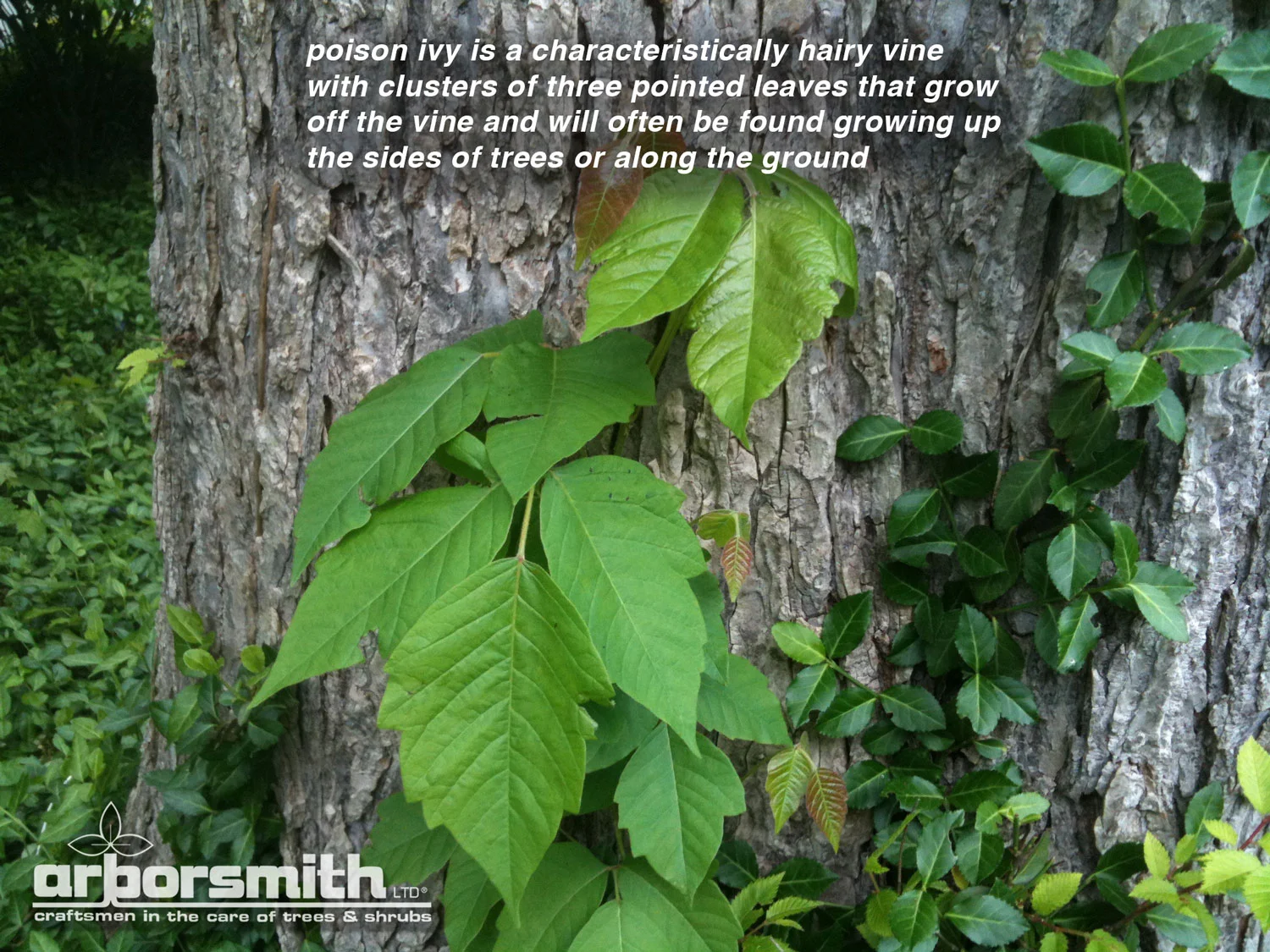Poison Ivy Primer
/Mother Nature's Moment
by: Lesley Bruce Smith, ISA Certified Arborist
© 2017, 2011 text and photos by Lesley Bruce Smith
This season finds many of us out in our gardens or in local forest preserves, with fall color not far away. Since we spend a good deal of time in your yards, as well, we know that there is a lot of poison ivy out there, even more with all the rain we have had. As professionals, we realize that the best way to avoid this often agonizing malady is to be able to identify and stay clear of the plant.
You may not know that humans react to the oils in poison ivy (Toxicodendron radicans) and that our contact with it does not have to be direct. If our pets walk through it and we touch them or we walk through it and then touch our shoes or touch any thing that has been in contact with it, the oil can rub off and cause a reaction. What we have also learned, from painful experience and from our doctor, is that our skin cells actually have a memory and when we are exposed to poison ivy over long periods our reactions become more intense. When we get a particularly bad case, it becomes somewhat systemic and can pop up as big blistered sores on other places of our body....yuk!
The good news is that when you know how to identify and stay clear of poison ivy you can stay rash free. Our two sons, avid outdoorsmen, who are now in their 30’s and who learned to identify poison ivy as very small children have never had a case, with the exception of once, when our oldest was trimming trees in Pennsylvania that were heavily infested with poison ivy.
Avoid the painful experiences of poison ivy exposure by eliminating it in your yards and gardens by cutting vines and using Glyphosate (generic original Round-Up) weed killer, carefully following manufacturer’s labeling. Spraying for poison ivy is a service Arborsmith, Ltd. offers. Whenever working around poison ivy cover your exposed skin by wearing long pants and long sleeve shirts and be careful to remove and wash them immediately using hot water and good laundry soap. Then bathe yourself using laundry detergent or Fels Naptha soap thoroughly cleansing your skin, both areas that were exposed or unexposed. The oil can remain viable on your tools, gloves, shoes and clothes for days afterward! When you know what poison ivy looks like you can stay away from it on the trails and forest preserves and in your own back yard.
poison ivy in autumn
If you know your skin has been in contact with poison ivy you can greatly lessen or completely avoid a rash by washing the affected area using laundry detergent within 1/2 hour of exposure. The laundry soap or Fels Naptha soap are the only soaps we know of that have significant surfactants to disperse the oil of poison ivy. CAUTION: hand or dish soap will make it worse!
Enjoy the outdoors, know how to stay clear of poison ivy!







